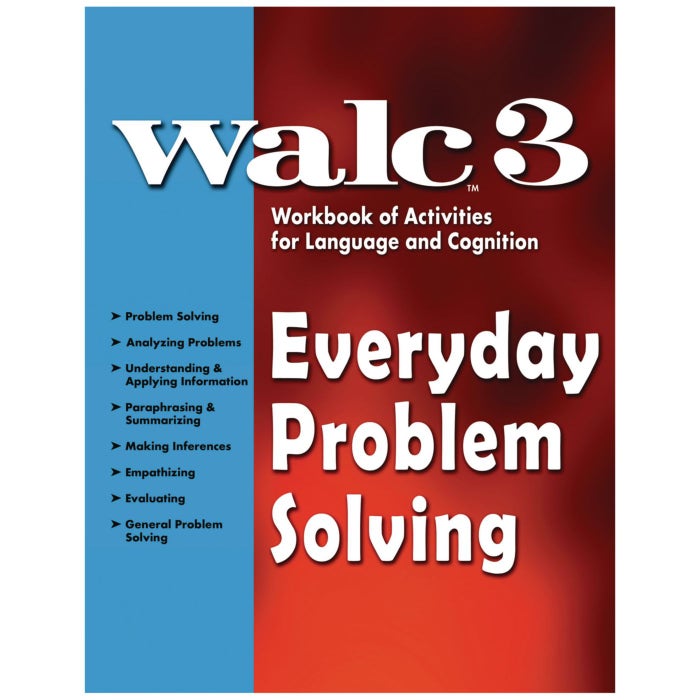WALC 3 Everyday Problem Solving
-

This product contains natural rubber latex which may cause allergic reactions.
-

For health reasons we are unable to accept returns or exchanges of hygiene products.
-

This item is considered dimensionally oversized parcel or requires truck delivery. Additional shipping charges will be calculated at time of order.
-

This item is classified as hazardous materials. Can ship ground only - restricted from air. Additional shipping surcharge will be added at time of order.
-

This product has a Bariatric rating.
-
If you have any questions please contact customer support at: 1.800.323.5547 or Email at:
customersupport@performancehealth.com
OTHER ADDRESSES
| Company or Name | Street | Address 2 | City | State | Zip |
|---|
The first section of the book gives practice in these skills:
Problem Solving—Identify a problem statement based on a brief scenario. Generate a quick solution based on limited information.
Analyzing Problems—Clients study scenarios based on everyday activities. Many of the scenarios are based on functional reading such as advertisements, receipts, prescription labels, and sports schedules. The activity questions prompt clients to think about details that will help solve the depicted problems.
Understanding & Applying Information—Identify information that is useful for problem solving and apply it to depicted situations.
Paraphrasing & Summarizing—Clients restate information in their own words. In the process, they identify the most important information. This skill helps them arrive at quicker solutions in problem solving.
Making Inferences—Clients learn to consider all the factors when they make inferences in a variety of depicted situations.
Empathizing—Clients consider the feelings of others and their own feelings as they analyze problems.
Evaluating—Clients weigh the solutions to problems, paying close attention to details.
The last section of the book gives practice in integrating the above skills. Real-life problems are presented in a brief article; similar to something you might read in a local newspaper. Clients use the information in the article, the corresponding picture, and their own experience to approach the problems effectively.
| Brand | Pro-Ed |
|---|---|
| Shipping Weight | 1.200000 |
| UNSPSC | 55101524 |
The first section of the book gives practice in these skills:
Problem Solving—Identify a problem statement based on a brief scenario. Generate a quick solution based on limited information.
Analyzing Problems—Clients study scenarios based on everyday activities. Many of the scenarios are based on functional reading such as advertisements, receipts, prescription labels, and sports schedules. The activity questions prompt clients to think about details that will help solve the depicted problems.
Understanding & Applying Information—Identify information that is useful for problem solving and apply it to depicted situations.
Paraphrasing & Summarizing—Clients restate information in their own words. In the process, they identify the most important information. This skill helps them arrive at quicker solutions in problem solving.
Making Inferences—Clients learn to consider all the factors when they make inferences in a variety of depicted situations.
Empathizing—Clients consider the feelings of others and their own feelings as they analyze problems.
Evaluating—Clients weigh the solutions to problems, paying close attention to details.
The last section of the book gives practice in integrating the above skills. Real-life problems are presented in a brief article; similar to something you might read in a local newspaper. Clients use the information in the article, the corresponding picture, and their own experience to approach the problems effectively.








 France
France Australia
Australia



